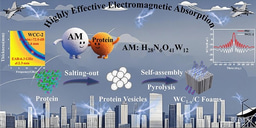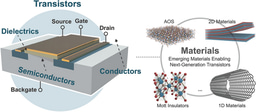A Mechanically Robust In-Situ Solidified Polymer Electrolyte for SiOx-Based Anodes Toward High-Energy Lithium Batteries

In the pursuit of higher energy density lithium-ion batteries (LIBs), researchers are constantly exploring innovative solutions to enhance the performance of SiOx-based anodes. A recent article published in Nano-Micro Letters, authored by Professor Guanglei Cui and Professor Huanrui Zhang from Qingdao Institute of Bioenergy and Bioprocess Technology, Chinese Academy of Sciences, presents a groundbreaking polymer electrolyte inspired by the microstructure of dragonfly wings, offering superior mechanical properties and electrochemical performance.
Why This Research Matters
- Enhanced Electrochemical Stability: SiOx-based anodes are known for their high theoretical specific capacity, making them attractive for high-energy-density LIBs. However, their significant volume change and rapid capacity decay during cycling pose challenges for practical applications. This study introduces a polymer electrolyte (PPM-PE) that effectively suppresses these issues by forming a stable solid electrolyte interphase (SEI) and reducing electrolyte decomposition.
- Improved Mechanical Properties: The PPM-PE, inspired by the phase-separation structure of dragonfly wings, exhibits excellent mechanical properties, including high elongation at break and breaking strength. These properties help mitigate the volume expansion of SiOx electrodes and maintain structural integrity during cycling.
- Potential for Practical Applications: The PPM-PE enables significant improvements in both cycling and rate performance in button-type and soft package full cells with SiOx-based electrodes, demonstrating its potential for practical use in high-energy-density LIBs.
Innovative Design and Mechanisms
- Dragonfly Wing-Inspired Microstructure: The PPM-PE is designed with a micro-phase separation structure, mimicking the rigid wing vein phase and soft wing membrane phase of dragonfly wings. This structure is achieved by in-situ polymerization of bicyclic phosphate ester and urethane motif-containing monomer (PU) and methyl methacrylate (MMA) in a liquid organic electrolyte. The PU segments and MMA motifs form a 3D polymer network that buffers against stress and stabilizes the SEI.
- Superior Mechanical Properties: The PPM-PE films exhibit an elongation at break of 161% and a breaking strength of 1.58 MPa, significantly outperforming other polymer electrolytes. This mechanical robustness helps to withstand the volume changes of SiOxelectrodes and maintain a stable SEI during cycling.
- Enhanced Electrochemical Performance: The PPM-PE shows a high lithium transference number (tLi+) of 0.57 and an oxidation resistance of over 5.25 V, contributing to faster electrochemical reaction kinetics and improved rate performance. The polymer-reinforced SEI layer rich in LiF further stabilizes the electrode structure and reduces electrolyte decomposition.
Applications and Future Outlook
- High-Energy-Density LIBs: The PPM-PE demonstrates excellent electrochemical performance in SiOx-based half-cells and soft package full cells, with a capacity retention of 88.14% after 148 cycles at 1C rate and 80.81% after 250 cycles at 0.4C rate. These results highlight the potential of PPM-PE for practical applications in high-energy-density LIBs.
- Future Research: Future work will focus on further optimizing the polymer electrolyte design to enhance its performance and exploring its application in other types of high-energy-density batteries. The dragonfly wing-inspired design philosophy could also be applied to other materials and battery systems to improve their mechanical and electrochemical properties.
This innovative polymer electrolyte, inspired by the microstructure of dragonfly wings, represents a significant step forward in the development of high-performance SiOx-based anodes for lithium-ion batteries. Stay tuned for more groundbreaking research from Professor Guanglei Cui and Professor Huanrui Zhang's team as they continue to push the boundaries of energy storage technology.
Follow the Topic
-
Nano-Micro Letters

Nano-Micro Letters is a peer-reviewed, international, interdisciplinary and open-access journal that focus on science, experiments, engineering, technologies and applications of nano- or microscale structure and system in physics, chemistry, biology, material science, and pharmacy.






Please sign in or register for FREE
If you are a registered user on Research Communities by Springer Nature, please sign in